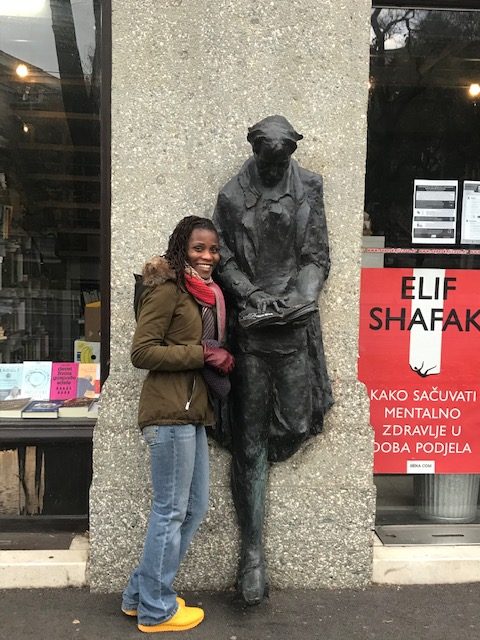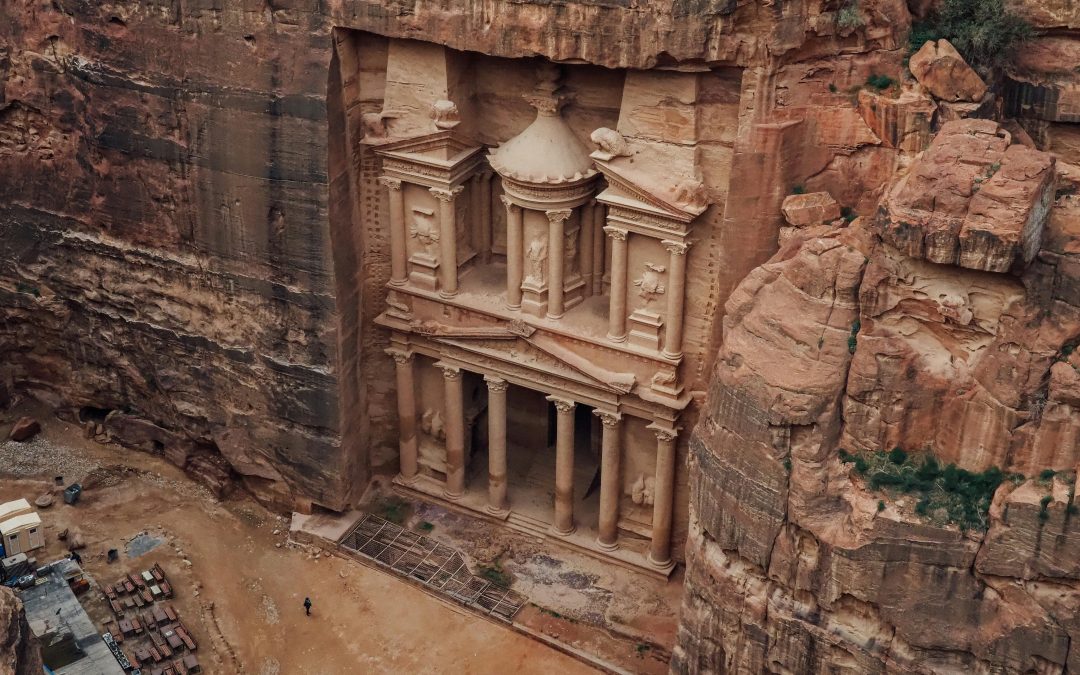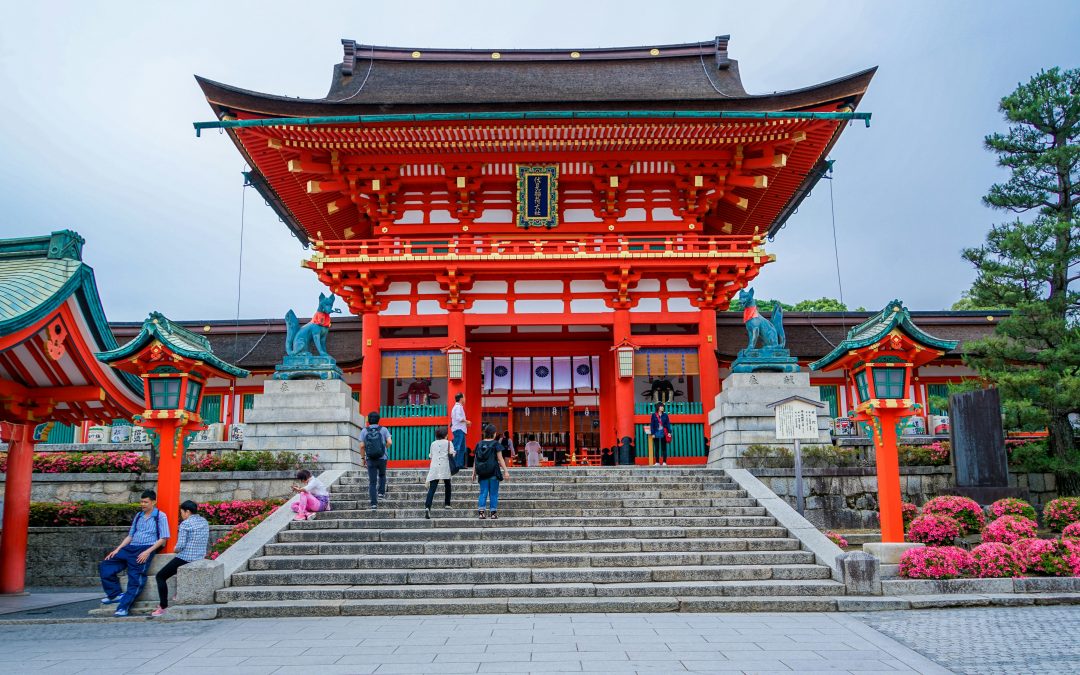
KYOTO
Kyoto isn’t a theme park; it’s a living capital of craft, faith, and neighborhood life. In 2025, you’ll have an extraordinary trip if you plan for the seasons, move early/late, and follow the city’s clear etiquette—especially in Gion—so residents, artisans, and travelers can share the same streets with ease.
1) What’s different (and why it matters)
- Gion’s private alleys: After years of overcrowding and harassment of geiko/maiko, Gion’s neighborhood council began banning tourists from certain private lanes and enforcing fines up to ¥10,000 for trespass/unauthorized photography on private roads. Main public streets (e.g., Hanamikoji) remain open, but the alleys signed as private are off‑limits from April 2024 onward. Expect multilingual “no entry/no photo” signage; enforcement exists to stop “maiko paparazzi” behavior and protect residents at work. [straitstimes.com], [timeout.com], [soranews24.com]
- Citywide etiquette push: Kyoto’s official guides now emphasize “Mind Your Manners” and a Code of Behavior for sustainable tourism: don’t block lanes, no eating while walking in crowded heritage areas, respect “no photography” signs at shrines/temples, and no street smoking/littering (ordinance enforced). [kyoto.travel], [moral.kyokanko.or.jp], [livejapan.com]
- Accommodation tax (heads‑up for 2026): Your 2025 trip uses the current lodging tax bands (¥200/¥500/¥1,000 per person per night by room rate). From March 1, 2026, Kyoto will shift to five tiers up to ¥10,000 pppn for ultra‑luxury rooms (≥¥100,000), with intermediate tiers at ¥400, ¥1,000 and ¥4,000. Plan budgets accordingly if you’re booking far ahead. [asahi.com], [thepointsguy.com]
2) Seasons & timing — when Kyoto feels magical (not manic)
Cherry blossom (late Mar–early Apr): Sublime—and peak crowds. Book a year ahead; go dawn/late at hot spots. [lonelyplanet.com]
Summer (Jun–Aug): Festivals (e.g., Gion Matsuri) animate the city; humid but electric. Nights are lively; day heat favors shaded temple gardens. [lonelyplanet.com]
Autumn leaves (late Oct–early Dec): The sweet spot for weather and color. Forecasts in 2025 suggest mid‑Nov → early Dec peaks in Kyoto, with warm autumn possibly delaying a week; many sites offer night illuminations. [livejapan.com], [japanhighlights.com]
Winter (Dec–Feb): Quiet, crisp, and reflective; closures around New Year (Dec 29–Jan 3). [lonelyplanet.com]
Trip‑builder tip: In blossom and foliage seasons, stack your days with pre‑8am visits and post‑sunset illuminations; park mid‑day for museums, tea, or markets.
3) The Etiquette that unlocks Kyoto (especially in Gion)
- Gion isn’t a stage set. Do not enter private alleys marked with no‑entry signs; don’t block doorways or follow maiko/geiko. Photography is banned on private roads and harassment carries ¥10,000 fines. If you’re on a public street and someone is working with a client, no photos (seek cultural performances instead). [timeout.com], [afar.com]
- At shrines/temples: Look for “No photography” pictograms; many sanctuaries restrict images in sacred halls. Keep voices low; no eating/drinking in sacred precincts. [moral.kyokanko.or.jp]
- City code: Don’t obstruct narrow lanes, don’t eat while walking in crowded heritage streets, no street smoking, and manage your trash (bins are scarce—carry it out). [livejapan.com]
- City reminders (2025): The official guide reiterates: do not pursue/photograph children or residents without consent; be mindful in school zones and neighborhood lanes. [kyoto.travel]
For a one‑page refresher, download “Mind Your Manners” from the official site before you go. [kyoto.travel]
4) Four perfect days (crowd‑smart, culture‑first)
Day 1 — Higashiyama at Dawn, Kiyomizu by Night
- Dawn lanes (Ninenzaka/Sannenzaka): arrive before shops open for empty stone ways and blue‑hour photos.
- Kiyomizu‑dera: The temple opens 06:00 daily; closing varies seasonally. In 2025, special night viewings run Mar 25–Apr 3, Aug 14–16, and Nov 22–Dec 7 (until 21:30, last entry 21:00). The night beam over the city is stunning—and crowd‑spread through long hours. [www.kiyomi…dera.or.jp], [kiyomizudera.or.jp]
- Kiyomizu basics: Standard admission is typically ¥500 adult/¥200 child; check onsite for updates, and expect daytime closures to shift for illumination set‑up. [kinabal.co.jp]
Etiquette note: Keep photo gear compact; tripods may be restricted, especially at night crowds. Watch posted rules. [www.kiyomi…dera.or.jp]
Day 2 — Fushimi Inari 24h + Uji tea
- Fushimi Inari‑taisha: Open 24/7—the stair loop to the summit is 2–3 hours. Peak crowds 09:00–18:00; go pre‑sunrise or post‑sunset for quiet tunnels of torii. Upper paths are dim at night—bring a headlamp and walk cautiously. [lonelyplanet.com]
- Timing reality: Even 06:00 can be busy in peak season; earlier is better (some advice suggests 05:00 starts). Evening descents at dusk can be atmospheric and safe if you stick to main trails. [swagachi.me], [japanlocal…rguide.com]
- Culture add‑on: Hop to Uji (Byōdō‑in Phoenix Hall; matcha tastings) for a half‑day. Evening: ramen or kaiseki back in Kyoto.
Day 3 — Arashiyama bamboo + riverside
- Arashiyama Bamboo Grove: The path is a public way and effectively open 24 hours (no lighting). Go 07:00–08:00 or late afternoon; stay on paths and don’t trample undergrowth or block the narrow lane for staged photos. [article.be…pes-jt.com], [characross…eworld.com]
- Tenryū‑ji → Okochi Sanso → Togetsukyō Bridge: Fold in garden time and the scenic riverbank. (Toilets and facilities are near the grove entrances; the path itself has few benches.) [characross…eworld.com]
- Optional: Sagano Scenic Railway (seasonal), then boat or café by the Katsura River.
Day 4 — Nijo Castle + Nishiki Market + an evening performance
- Nijō‑jō: Plan for the castle and gardens mid‑morning (check current hours).
- Nishiki Market: Sample precisely—note the “no eating while walking” etiquette in crowded sections; use stall areas or designated spaces. [livejapan.com]
- Respectful performance: Instead of chasing maiko in alleys, book a licensed cultural show/tea ceremony or seasonal dance (odori)—the official Kyoto site lists events and Visitor Host tours. [kyoto.travel]
5) Kyoto at night — the legal (and luminous) ways to enjoy it
- Temple illuminations: Beyond Kiyomizu‑dera’s published spring/summer/autumn nights, watch the city’s event pages for other autumn light‑ups (Eikan‑dō, Kōdaiji, etc.) that typically run mid‑Nov → early Dec with timed entry. [kyoto.travel]
- Fushimi Inari after dusk: Allowed (site is open 24h), but it’s a mountain: bring a light, mind footing, and stay to the main loop. [lonelyplanet.com]
- Gion nights: Public streets only; no private alleys. If you want a photo, buy a ticketed experience—don’t interrupt someone’s work. [straitstimes.com]
6) Getting around — IC cards, passes, and what actually saves you time
- IC cards: Suica (Tokyo’s) and ICOCA (Kansai’s) are interoperable nationwide. In 2025, Suica sales returned to normal after prior chip shortages; you can tap Suica widely across Kyoto subways, JR and many buses/shops—though a few rural lines still require paper tickets. [japan-guide.com], [umamibites.com]
- Kansai passes (for region‑hopping): JR West Kansai Area Pass (1–4 days) gives unlimited JR rides in Osaka–Kyoto–Nara–Kobe and includes the Haruka airport express (book reserved seats in advance). Not valid on Shinkansen; you’ll still use subways/private rail for many city hops. Check official pricing (¥2,800–¥7,000 adult depending on days). [westjr.co.jp]
- Which to choose?
- Staying mostly in Kyoto: a Kyoto Subway & Bus day pass (from local operators) can be handy; otherwise, IC pay‑as‑you‑go is simplest. (Kyoto’s bus network can be crowded; favor rail where possible.) [japantrave…vitime.com]
- Doing Osaka, Nara, Himeji day trips: a Kansai Area Pass can pay off quickly vs. point‑to‑point fares. [en.japantravel.com]
7) Where to stay — neighborhoods with a purpose
- Southern Higashiyama: Walkable to Kiyomizu‑dera and preserved lanes; book early in peak seasons. [lonelyplanet.com]
- Downtown/Shijō–Kawaramachi: Transit and dining hub; easy access everywhere. [lonelyplanet.com]
- Arashiyama: Nature and river views; plan 1+ night for quiet dawn bamboo walks.
- Ryokan nights: Consider at least one ryokan stay (tatami + kaiseki) to immerse in Kyoto style. [lonelyplanet.com]
Budget note: For stays in 2026+, the accommodation tax increases sharply at luxury tiers (up to ¥10,000 pppn). 2025 trips keep current lower rates. [thepointsguy.com]
8) Site‑specific smarts (the stuff that keeps trips smooth)
Fushimi Inari
- 24 hours; shops and shrine counters keep daytime hours (amulets/fortunes typically 07:00–18:00). The full loop is 2–3 hours; many visitors only do the lower Senbon Torii and turn back—continue upward for space. [japanlocal…rguide.com]
Kiyomizu‑dera
- Opens 06:00; closing varies; 2025 night viewings listed above. Arrive pre‑8:30 in high season; return at night instead of braving midday. [www.kiyomi…dera.or.jp], [kiyomizudera.or.jp]
Arashiyama Bamboo Grove
- Open 24/7 (public road); no lighting; go early/late; be considerate—don’t step into the bamboo for posed shots, don’t block the narrow path. Facilities are outside the grove. [article.be…pes-jt.com], [characross…eworld.com]
Gion
- Stay on public streets; no private alleys signed with bans; no unsolicited geisha photos, and never touch garments—multiple incidents led to the rule‑tightening. [straitstimes.com]
9) Autumn 2025 — your foliage playbook
- When: Typical late Nov → early Dec; some 2025 forecasters expect slightly later peaks if warmth persists. Plan flexible days. [japanhighlights.com], [livejapan.com]
- How: Combine one dawn, one night illumination, and one suburban pocket (e.g., Uji, Kibune) to hedge timing. [japanhighlights.com]
- Where (classic picks): Kiyomizu‑dera stage views; Eikan‑dō’s famed night light‑up; Arashiyama hillsides by river; Tōfuku‑ji bridges (capacity managed). (Confirm each site’s 2025 light‑up calendars on the official Kyoto events pages.) [kyoto.travel]
10) Respect‑first photography & culture
- Ask consent for close portraits; be mindful of portrait rights and privacy in Japan’s culture. Avoid photographing children or school groups; some schools post signs requesting no photos. [japantravelpros.com]
- Read the room in teahouses/performances: many venues prohibit photos; enjoy the moment and buy official images instead. [moral.kyokanko.or.jp]
- Gion rule of thumb: If a maiko is with clients, no photography; book a licensed performance/tea to engage respectfully. [afar.com]
11) Money, tickets & lines — small choices, big gains
- Temple tickets are generally cash or simple POS; carry small bills.
- IC cards speed transport buys and many convenience‑store payments. Suica works in the ICOCA area (Kansai), but very rural lines can still be cash/paper only. [umamibites.com], [getaroundjapan.jp]
- Crowd math: Shift photo‑icon sites to dawn (Higashiyama, Fushimi), and put markets/museums at mid‑day. Kyoto’s own advisory pages flag busy seasons and tips each autumn—worth a check before you head out. [kyoto.travel]
12) Five ethical‑travel micro‑itineraries (steal these)
- Dawn Kodaiji → Maruyama Park → Yasaka Shrine (breakfast near Shijō). Keep temple courtesies; check each site’s photo rules. [moral.kyokanko.or.jp]
- Philosopher’s Path loop before 09:00 → Eikan‑dō foliage (night light‑up day‑of). [kyoto.travel]
- Uji tea day: Byōdō‑in + matcha brewing class → riverside stroll at sunset.
- Northern temples: Daitoku‑ji sub‑temples or Kinkaku‑ji early, then Nijō‑jō garden.
- Arashiyama low‑impact: Bamboo at dawn → Tenryū‑ji garden → riverside bento (use bins; no littering). [livejapan.com]
13) FAQs
Are tourists “banned” from Gion?
No. Public streets remain open, but private alleys in parts of Gion prohibit entry and photography, with fines up to ¥10,000 for violations, introduced to prevent harassment of geiko/maiko and residents. Follow posted signs and choose licensed cultural shows instead. [straitstimes.com], [timeout.com]
Is Fushimi Inari really open 24 hours?
Yes. The shrine complex is open 24/7; the full loop to the summit takes 2–3 hours. Go pre‑sunrise or after dusk to avoid crowds; bring a light at night, as upper paths aren’t fully lit. [lonelyplanet.com], [japanlocal…rguide.com]
When does Kiyomizu‑dera open, and are there night visits in 2025?
It opens at 06:00 year‑round; closing times vary. Special night viewing for 2025 runs Mar 25–Apr 3, Aug 14–16, and Nov 22–Dec 7 (to 21:30; last entry 21:00). [www.kiyomi…dera.or.jp], [kiyomizudera.or.jp]
Best time for autumn leaves in Kyoto this year?
Typically mid‑Nov → early Dec. 2025 outlooks suggest normal to slightly later peaks if warmth continues; check forecasts before you fly, and hedge with a night light‑up. [livejapan.com], [japanhighlights.com]
Does Suica work in Kyoto?
Yes—IC interoperability means Suica taps through most Kyoto transport and shops; ICOCA is the local equivalent. Some rural lines remain cash/paper. [japan-guide.com], [umamibites.com]
What’s happening to Kyoto’s hotel tax?
The current per‑person nightly tax (¥200/¥500/¥1,000 by room rate) applies in 2025. From March 1, 2026, a five‑tier system tops out at ¥10,000 for rooms ≥¥100,000; mid‑tiers become ¥400/¥1,000/¥4,000. [thepointsguy.com]
14) Responsible‑travel checklist
- Public vs private: Obey no‑entry and no‑photo signs—especially in Gion’s private alleys. [straitstimes.com]
- Shrines/temples: Quiet voices, modest dress, follow posted photo bans, no food inside precincts. [moral.kyokanko.or.jp]
- Streets: Don’t block narrow lanes, don’t eat while walking in crowded heritage areas, no street smoking. [livejapan.com]
- Leave no trace: Carry trash until you find bins; Kyoto minimizes public cans in old quarters. [livejapan.com]
- Choose ticketed culture: See maiko/geiko in licensed shows, not by following workers. [kyoto.travel]

Written by Kariss
More From This Category

PETRA
Even if you’ve seen a thousand photos, the first time the Siq releases you into the Treasury’s rose glow is a shock. Petra isn’t just a façade; it’s a 60‑square‑kilometre city of mountains, wadis and ritual spaces that rewards anyone willing to walk a little farther and plan a little smarter. In 2025, that means understanding ticketing (and the Jordan Pass), timing your run through the Siq, using lesser‑known trails, and travelling in a way that honours the Bedouin communities who still steward this place.

PETRA
Even if you’ve seen a thousand photos, the first time the Siq releases you into the Treasury’s rose glow is a shock. Petra isn’t just a façade; it’s a 60‑square‑kilometre city of mountains, wadis and ritual spaces that rewards anyone willing to walk a little farther and plan a little smarter. In 2025, that means understanding ticketing (and the Jordan Pass), timing your run through the Siq, using lesser‑known trails, and travelling in a way that honours the Bedouin communities who still steward this place.

PETRA
Even if you’ve seen a thousand photos, the first time the Siq releases you into the Treasury’s rose glow is a shock. Petra isn’t just a façade; it’s a 60‑square‑kilometre city of mountains, wadis and ritual spaces that rewards anyone willing to walk a little farther and plan a little smarter. In 2025, that means understanding ticketing (and the Jordan Pass), timing your run through the Siq, using lesser‑known trails, and travelling in a way that honours the Bedouin communities who still steward this place.
0 Comments
Our Newsletter


0 Comments